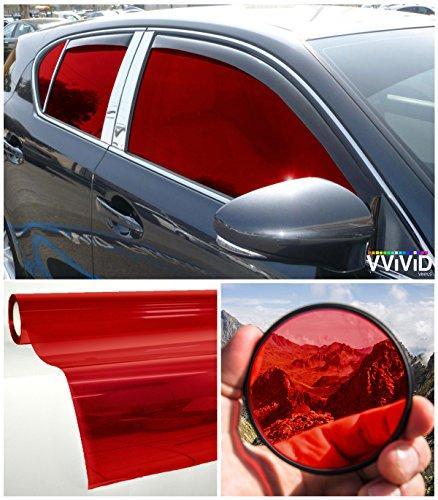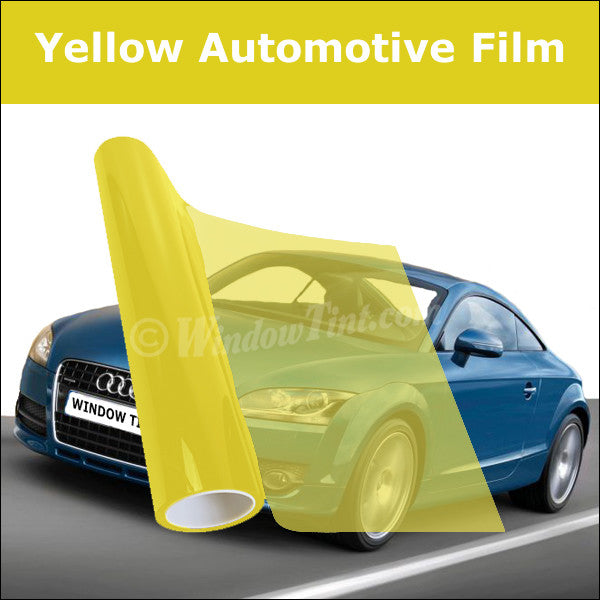Davinci of Michigan Explains the Science Behind Heat and UV Rejection
A Comprehensive Overview to Comprehending Auto Window Color and Its Advantages
Auto window tinting offers even more than simply an aesthetic function for cars. It provides various types, each with unique features and benefits. Recognizing these options, along with lawful laws and maintenance ideas, is necessary for any kind of automobile proprietor. The benefits may substantially boost driving convenience and automobile durability. As one discovers the subtleties of window tinting, the inquiry arises: what kind of tint is finest fit for individual demands?
Recognizing Auto Window Color: What It Is and Just how It Functions
Vehicle window color functions as a safety obstacle that improves lorry aesthetic appeals while providing practical benefits. This thin movie is put on the interior surface area of automobile windows, lowering glare and blocking dangerous ultraviolet (UV) rays from the sunlight. By filtering sunlight, vehicle home window tint aids to manage the interior temperature level of the vehicle, causing boosted comfort for travelers and decreased dependence on air conditioning.Additionally, it shields the automobile's interior from fading, maintaining both upholstery and control panel products. The tint can also enhance personal privacy, making it more difficult for outsiders to see inside the automobile. Furthermore, specific sorts of window tint can increase safety; in the event of a crash, the film aids hold shattered glass with each other, minimizing the danger of injury from flying fragments. Overall, car home window color serves both practical and aesthetic functions, making it a preferred choice among lorry owners.
Kinds Of Window Tint: A Summary of Options
When taking into consideration window tint options, numerous types are available, each with distinct features. Dyed, metalized, and ceramic window colors offer differing degrees of warmth denial, UV protection, and visual allure. Recognizing these distinctions can aid automobile proprietors make informed choices based upon their preferences and demands.
Dyed Home Window Color
Colored window color represents a popular choice amongst car proprietors looking for a reliable and budget-friendly means to improve their automobile's visual appeals and personal privacy. This sort of color is developed by positioning a layer of color in between a glue layer and a safety finishing, leading to a darkened look that minimizes glare and improves visual convenience. While colored home window color effectively blocks dangerous UV rays, it might not offer the exact same level of heat being rejected as various other color kinds. Additionally, its shade can fade in time, possibly decreasing its effectiveness. Despite these disadvantages, dyed home window color continues to be favored for its cost-effectiveness and capacity to offer a sleek, stylish want to different lorry designs.
Metalized Home Window Tint
Metalized home window tint supplies an equilibrium of design and performance, making it a preferred selection among car proprietors. This type of color incorporates metallic bits within the film, boosting both aesthetic appeal and warm denial. The reflective high quality of metalized color assists to reduce glow and enhance personal privacy, while also offering UV security, which safeguards the car's interior. Additionally, metalized window color can strengthen home window stamina, potentially stopping shattering throughout mishaps. Nevertheless, it is very important to note that the metallic elements can disrupt digital signals, such as general practitioner and cell phone reception. In general, metalized home window tint supplies a reliable option for those looking for a combination of sun, look, and toughness protection for their lorries.
Ceramic Window Color
Ceramic window tint represents an innovative alternative in the range of auto window movies, supplying unique advantages over conventional colors. Unlike colored or metalized movies, ceramic colors use innovative ceramic particles, which properly reject heat and UV rays without compromising exposure. This technology assures that lorries remain cooler, decreasing reliance on air conditioning and boosting gas performance. In addition, ceramic home window tints are much less likely to hinder electronic devices, such as GPS or mobile signals, making them a practical option for contemporary automobiles. Their toughness and scrape resistance contribute to a much longer life expectancy compared to various other kinds of colors. In general, ceramic window color provides exceptional efficiency, convenience, and defense, making it a favored alternative for critical automobile owners.
Benefits of Vehicle Window Color: Beyond Aesthetic Appeals
While many individuals associate auto window color with improved style, its advantages prolong far beyond mere looks. One considerable advantage is heat reduction; window color can block as much as 99% of damaging UV rays, keeping the indoor cooler and protecting furniture from fading. This not just improves convenience during hot weather condition but also lowers reliance on air conditioning, leading to improved fuel efficiency.In enhancement, auto home window color provides an added layer of personal privacy and protection. Colored home windows make it challenging for outsiders to see inside the car, which can deter theft and protect valuables. Additionally, several tints strengthen the glass, lowering the likelihood of shattering in the occasion of an accident, consequently enhancing safety.In enhancement to these practical benefits, vehicle home window color can likewise add to glow reduction, improving presence for motorists and travelers alike. This diverse strategy to convenience and safety and security makes window color a beneficial financial investment for vehicle proprietors.
Legal Considerations: Tinting Rules by State
Prior to committing to auto window tint, automobile owners have to navigate an intricate landscape of tinting laws that differ by state. Each state has certain laws governing the allowable levels of color darkness and reflectivity for different home windows, consisting of windshields, front side windows, and rear home windows. These laws commonly consist of noticeable light transmission (VLT) percents, which dictate just how much light can go through the colored glass.Some states permit darker tints on back windows while restricting front side and windscreen colors for security reasons. In addition, certain states might need a certificate from the manufacturer to confirm compliance with tinting regulations. Breaching these policies can cause penalties, compulsory removal of the color, or both. Consequently, it is crucial for car proprietors to investigate their state's regulations thoroughly to guarantee lawful compliance prior to installing home window color. This diligence can save money and time over time.
Choosing the Right Color: Aspects to Consider
When selecting the appropriate home window tint for an automobile, numerous essential variables enter into play. Tint darkness degrees, UV defense scores, and conformity with legal regulations are essential factors to consider to guarantee both visual appeals and capability. Examining these aspects will aid individuals make an educated choice that satisfies their needs and sticks to neighborhood laws.
Tint Darkness Levels
Selecting the appropriate tint darkness degree is vital for accomplishing the wanted balance between appearances and performance in auto home window tinting. Different states have differing legal guidelines relating to color darkness, which can influence the selection. Normally, tints are determined in portions, with reduced percents suggesting darker tones. Darker tints offer boosted personal privacy and a streamlined look but can lower visibility, especially in the evening. On the other hand, lighter tints maintain a more open feel, ensuring sufficient presence while still supplying some warm and glare decrease. When making a decision, people ought to consider their driving practices, regional regulations, and personal preferences. Inevitably, the ideal color darkness degree improves the automobile's look while guaranteeing security and conformity with lawful requirements.
UV Protection Ranking
Tint darkness degrees play a significant role in the total effectiveness of car window tinting, yet another crucial variable to assess is the UV security rating of the picked color. This ranking indicates the portion of harmful ultraviolet rays that the color can block. Premium colors typically provide 99% or more UV defense, securing travelers and the automobile's interior from sunlight damage. Davinci of Michigan. Prolonged exposure to UV rays can result in skin troubles and fading of furniture, making a high UV security ranking crucial for wellness and long life. When picking window color, consumers need to prioritize this score alongside darkness degrees to assure maximum convenience and safety while driving. Comprehending these aspects help in making an informed decision when spending in car home window tinting
Lawful Regulations Compliance
Understanding neighborhood lawful policies is essential for anyone considering automobile home window tinting. Each state or region has particular laws controling the allowed levels of tint darkness and reflectivity for various windows. These policies commonly specify the noticeable light transmission portion, determining how much light can pass through the colored glass. Non-compliance can bring about fines, required elimination of the tint, or concerns throughout car examinations. Additionally, some locations may have constraints on using particular tinting products, requiring consumers to choose items that meet security standards. It is crucial for vehicle proprietors to investigate their neighborhood laws extensively before selecting home window color to guarantee compliance and prevent prospective legal difficulties.

Installation Refine: DIY vs. Specialist Providers
How does one make a decision in between a do it yourself installment and hiring specialist services for vehicle home window tinting? The selection usually depends upon spending plan, experience, and wanted outcomes. A do it yourself strategy can be cost-efficient, permitting people to reduce labor expenses. It requires a particular degree of skill and expertise regarding the tinting process. Those that are careful and person may locate success with DIY kits available in the market.Conversely, specialist solutions supply proficiency and high-grade products, making sure a flawless finish. Professionals frequently assure their job, offering assurance versus prospective problems such as peeling or gurgling. Furthermore, they recognize with regional regulations concerning tinting, which can be complicated for the average cars and truck owner.Ultimately, the choice shows an equilibrium between cost, personal ability, and the expected quality of the tinting task. Each alternative has its benefits, and the very best option depends on specific situations and preferences.
Upkeep Tips: Maintaining Your Color in Top Problem

Often Asked Concerns
The Length Of Time Does Home Window Color Commonly Last on a Car?
Home window tint commonly lasts between five to 10 years, depending on aspects such as high quality, application, and environmental problems. Regular maintenance and proper care can extend its life-span, making certain perfect performance and look over time.
Can Home Window Tinting Damage My Automobile's Original Glass?
Window tinting, when used correctly, does not damage a cars and truck's original glass. Nonetheless, incorrect installment or low-quality materials might lead to concerns like peeling off or bubbling, potentially influencing the glass's integrity gradually.
Is Home Window Tinting Safe for All Kinds Of Automobiles?
Home window tinting is typically secure for a lot of cars, offered the film adheres to regional laws and is correctly used. Some customized vehicles may require specific considerations, making it necessary to consult specialists before installation.
Will Home Window Tinting Void My Automobile Warranty?
The question of whether home window tinting voids an auto service warranty often relies on the maker's plans. Usually, if the tint does not damage the automobile, warranties typically remain intact. Speaking with the supplier is advisable.
Can I Get Rid Of Window Tint Myself if Needed?
Removing window color oneself is possible, however it requires mindful focus to avoid damaging the glass. Individuals ought to utilize proper tools and methods to guarantee an effective elimination without leaving adhesive deposit or scratches behind. While dyed window color efficiently blocks dangerous UV rays, it might not offer the exact same degree of warmth being rejected as other tint kinds. Ceramic home window tint stands for an innovative option in the range of vehicle home window films, providing distinctive benefits over traditional colors. Before devoting to car window color, automobile proprietors must browse a complicated landscape of tinting laws that differ by state. These guidelines typically consist of visible light transmission (VLT) percentages, which dictate just how much light can pass through the colored glass.Some states allow darker colors on back home windows while limiting front side and windshield tints for safety factors. Tint darkness degrees play a substantial duty in the general performance of auto home window tinting, however another crucial variable to review is the UV protection rating of the chosen tint.